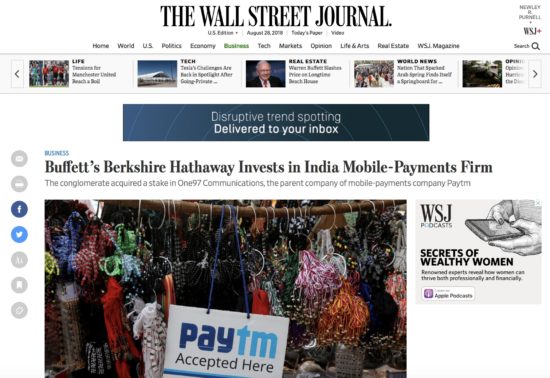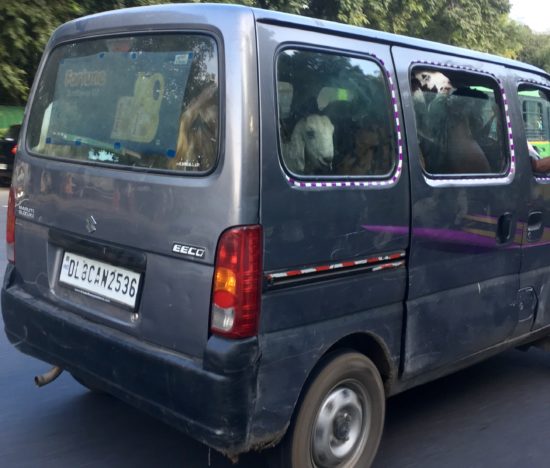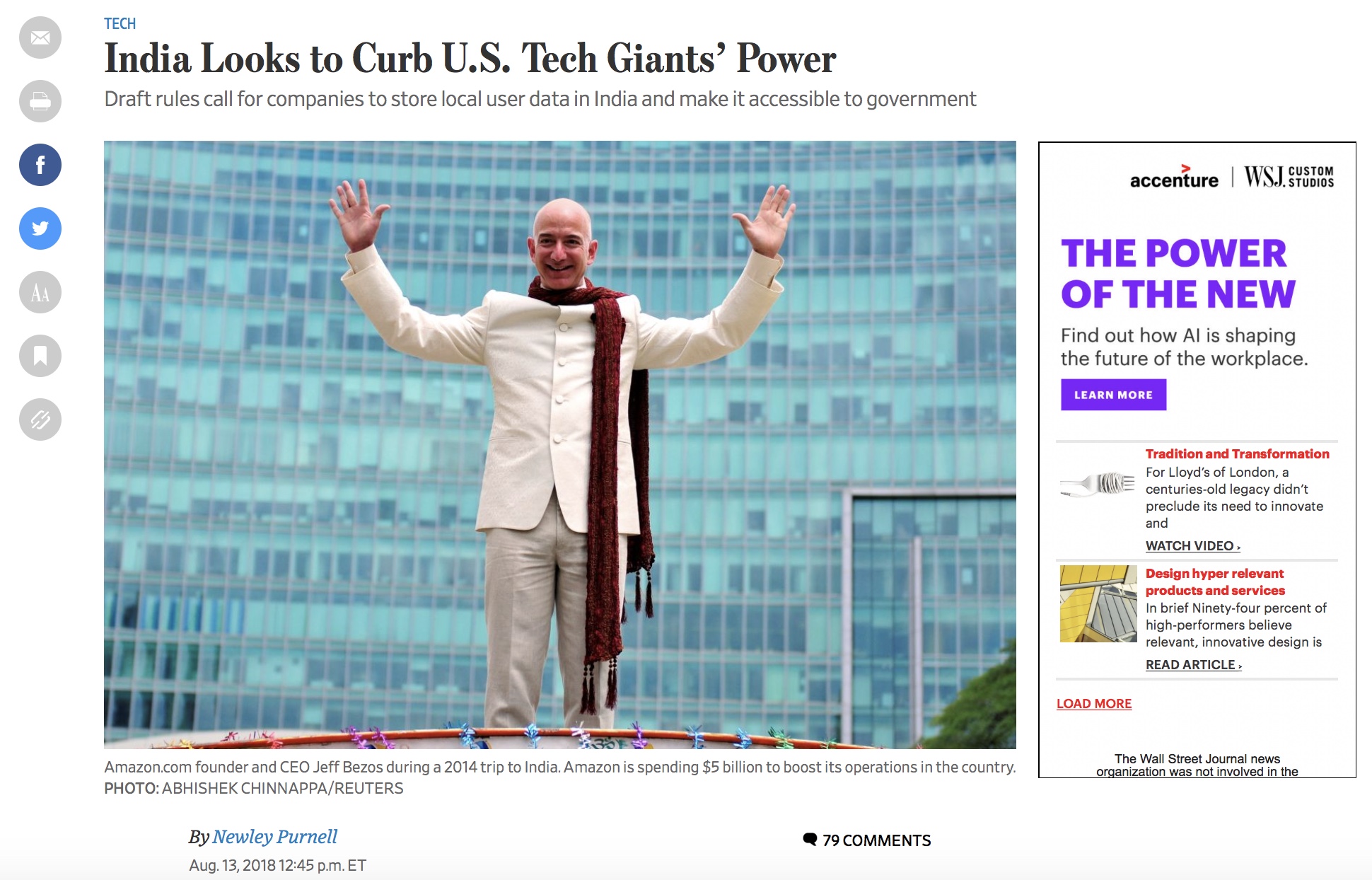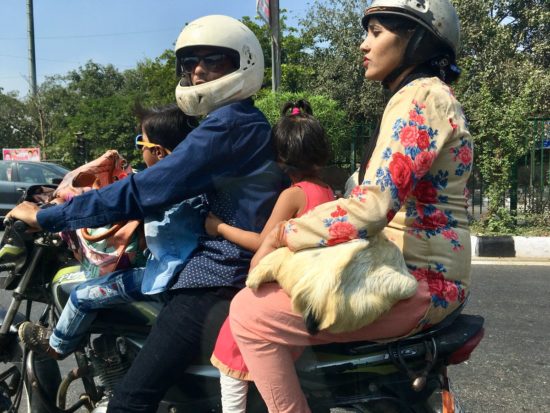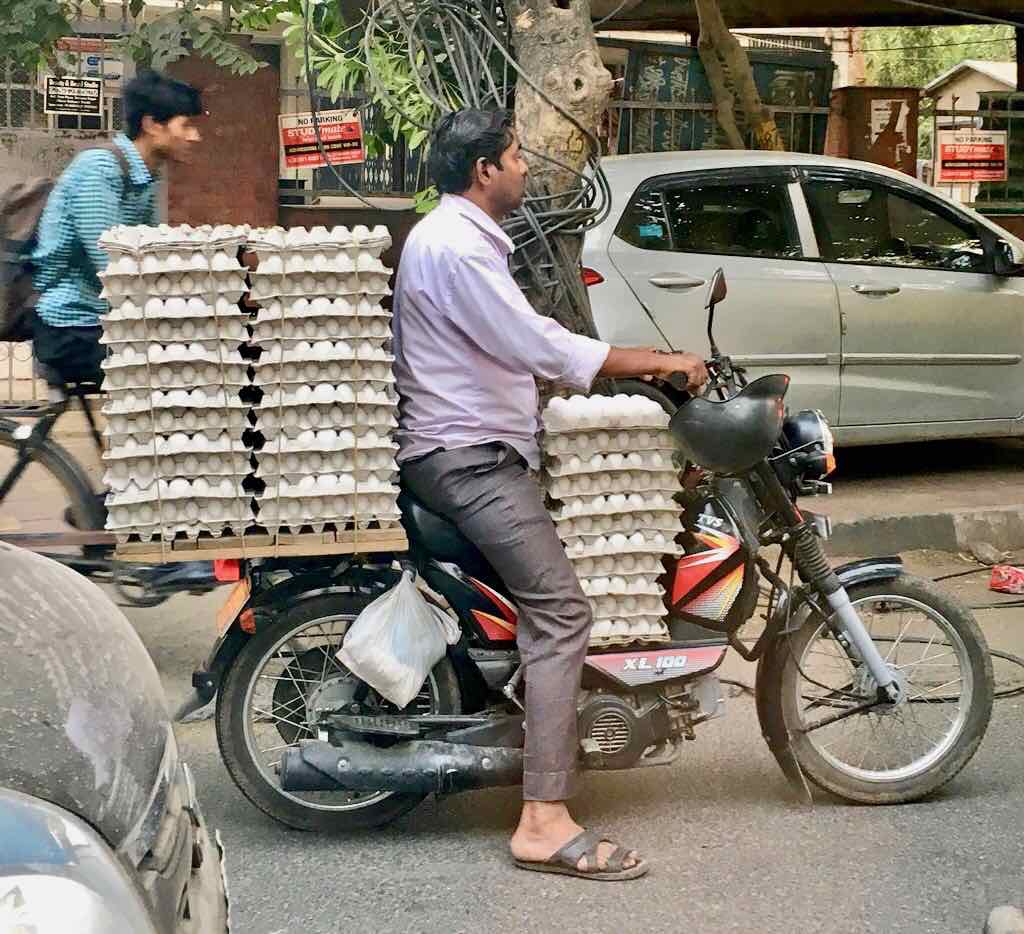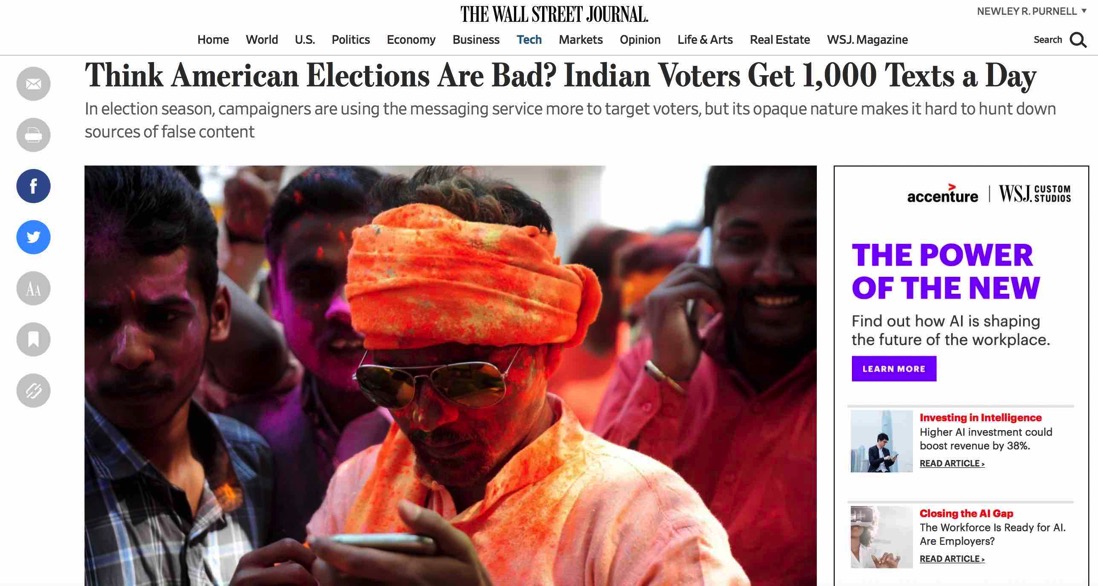
That’s the headline of my most recent story, which came out yesterday. It begins:
NEW DELHI–Alphabet Inc.’s Google is raising its mobile-payments game in India with new functions and services as global players race to woo the nation’s legions of consumers who are skipping credit cards and transacting on smartphones instead.
A day after Warren Buffett’s Berkshire Hathaway Inc. said it had invested in the parent company of India’s largest digital-payments firm, called Paytm, Google said it is expanding its mobile money service in the South Asian nation. It is partnering with several local banks to offer consumer loans from within its app in the coming weeks, aiming to assist users seeking cash to cover expenses such as school fees.
Google is also expanding its tie-ups to more online merchants as well as to physical retail shops such as India’s ubiquitous mom and pop stores.
